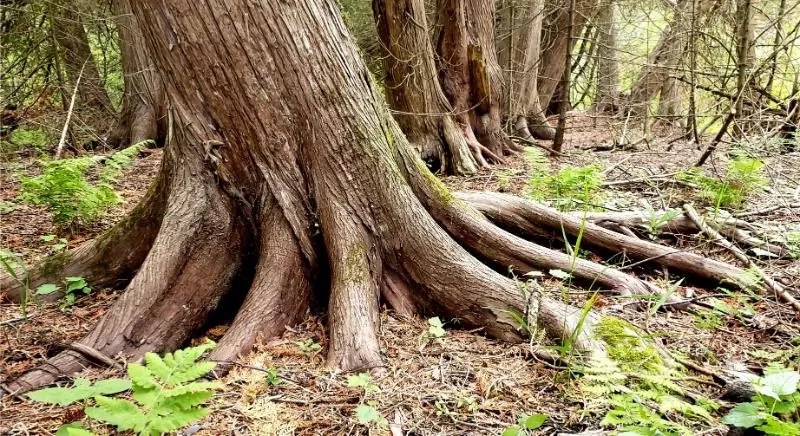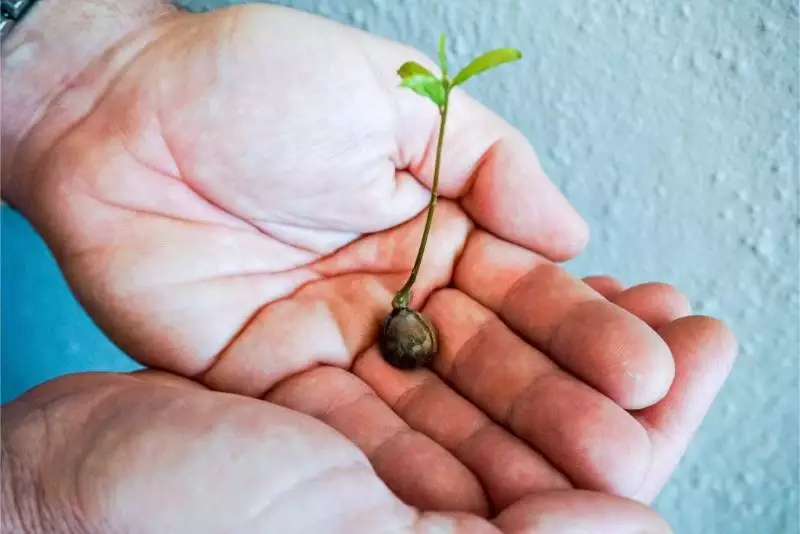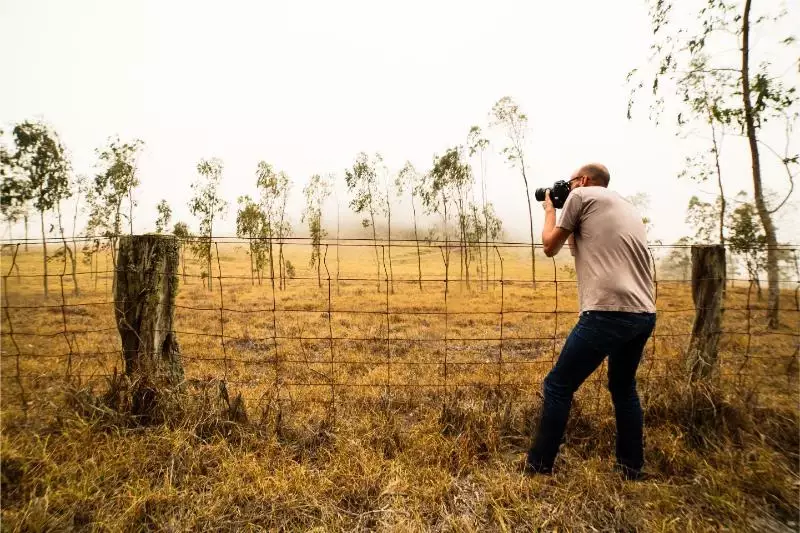How Big Do Pecan Trees Get & What Yield to Expect
With their impressive size and potentially abundant nut production, it's essential to understand what to expect from your pecan tree as it matures. But, how big do pecan trees get?
Pecan trees can grow quite large, reaching heights between 60 and 130 feet, with a canopy spreading over 50 feet in diameter, depending on the variety and growing conditions. A healthy tree in a good year can produce 200 to 250 pounds of pecans.
It typically takes eight to ten years for a four-to-six-foot-tall tree purchased at a nursery to start producing nuts. However, the yield may vary from year to year, as pecan trees tend to alternate between heavy and light crop years.
Summary
- The Stuart variety is often the highest yielding at 100–200 lbs, followed by Desirable and Schley at 75–150 lbs of pecans.
- To maximize your pecan tree's potential, ensure that it is planted in the right soil and climate and that it receives adequate water.
- Pecan trees thrive in moist, fertile soil with a slightly acidic to neutral pH.
- The spacing recommendation is 40 to 70 feet between trees.

On this page:
Pecan Tree Size and Growth Patterns
Here is a table showing pecan tree sizes and the expected yield per size:
| Pecan Tree Size (feet) | Approximate Age | Expected Annual Yield |
|---|---|---|
| Sapling (1-10) | 1-5 years | None - tree is still developing |
| Young tree (10-30) | 5-10 years | 1-5 lbs |
| Medium tree (30-60) | 10-20 years | 5-15 lbs |
| Large tree (60-90) | 20-30 years | 15-50 lbs |
| Very large tree (90-130) | 30+ years | 50-250 lbs |
Pecan tree dimensions
Pecan trees are a popular choice for their delicious edible nuts, but it's essential to understand their size and growth patterns before planting them. A mature pecan tree can reach impressive heights between 70 and 100 feet, with a canopy spreading over 50 feet in diameter. This size is something to keep in mind when deciding where to plant your pecan tree.
The expected yield of pecan trees varies depending on their maturity. While a young and healthy pecan tree of 4 to 6 feet tall can begin producing nuts in eight to ten years, the crop yield will not be consistent every year. Pecan trees alternate between heavy crop years and light crop years, which might affect the harvest.
Factors affecting tree growth
Ideal conditions for a pecan tree include moist, fertile soil with a slightly acidic-to-neutral pH balance between 6.0 and 7.0. Proper tree spacing, usually 40 to 70 feet between trees, is crucial for their growth and allows enough room for their expansive canopies without crowding each other.
Different pecan tree varieties may have different growth patterns and yield expectations. For example, some early-maturing varieties start producing nuts at a younger age and may have a more manageable size than others, with an average height of 60 feet and a spread of 40 feet.
Here is a table showing expected yields for different pecan varieties:
| Pecan Variety | Tree Size (feet) | Approximate Age to Bearing | Expected Annual Yield at Maturity |
|---|---|---|---|
| Stuart | 60-80 | 5-7 years | 100-200 lbs |
| Desirable | 60-80 | 5-7 years | 75-150 lbs |
| Schley | 60-80 | 5-7 years | 75-150 lbs |
| Cape Fear | 50-70 | 5-7 years | 50-100 lbs |
| Pawnee | 50-70 | 4-6 years | 50-100 lbs |
| Wichita | 50-70 | 5-7 years | 50-100 lbs |
| Cheyenne | 40-60 | 5-7 years | 25-75 lbs |
| Western Schley | 40-60 | 5-7 years | 25-75 lbs |
| Sioux | 40-60 | 5-7 years | 25-75 lbs |
Here is why the Pawnee is the fastest producing pecan tree.

Life Stages of Pecan Trees
In this section, we will go through the different life stages of pecan trees and what you can expect in terms of size and yield at each stage.
Seedling phase
During the seedling phase, pecan trees are small and focus primarily on establishing healthy roots and developing a strong stem. It may take a few years for a pecan tree to transition from a seedling to a sapling. At this stage, the tree won't produce any nuts, but proper care, such as watering and fertilizing, is essential for its future growth.
Sapling to mature tree
By the time it is 10 years old, it should be about 16 feet tall under ideal conditions. The tree's roots will spread twice as far as its branches, mainly in the topmost 6 to 18 inches of soil, which helps to anchor the tree and support its growth. During this time, you will start to see the tree produce nuts, but the yield will be modest at first. Continue providing regular care, including watering and fertilizing, to ensure healthy growth and nut production.
Full maturity and senescence
Once your pecan tree reaches full maturity, you can expect it to grow between 66 and 133 feet tall and produce abundant nuts. The yield will greatly increase, providing you with plenty of pecans for consumption or sale. Even in this stage, it is crucial to maintain regular maintenance like pruning, fertilizing, and watering, which ensures the tree stays healthy and productive.
As your tree moves into the senescence stage, its growth will slow down, and it may become more susceptible to diseases or pests. Proper and consistent care for your tree from the seedling phase all the way to full maturity can help to prolong its productive life and increase the overall yield of pecans throughout its lifespan.

Pecan Yield Expectations
Yield in young trees
On average, it takes about 5–10 years for a pecan tree to start bearing nuts on a commercial scale. In these initial years, your pecan grove might yield around 40 to 50 pounds per acre. It's important to be patient during this stage, as your trees are still growing and becoming more established.
Peak production years
Once your pecan trees reach maturity (around 20–25 years old), you can expect a significant increase in production. During their peak years, mature pecan trees may produce anywhere from 70 to 150 pounds of nuts per year. Some well-maintained and favorable conditions can lead a tree to yield up to an impressive 200–250 pounds in a good year.
Yield decline in older trees
Like any other living organism, pecan trees have a natural life cycle. As they age, their yield might gradually decline. To maintain consistent production in your pecan orchard, it's a good idea to integrate younger trees periodically to offset the decline in production from older ones. Within your orchard, provide proper pruning and care to older pecan trees to extend their lives and maintain overall tree health.

Tree Maintenance for Optimal Yield
This section will outline the best practices for tree care, covering proper fertilization, pruning, and training, as well as pest and disease control.
Proper fertilization
As these trees grow, they require consistent water and fertilization to produce nuts. For optimal results, apply fertilizer based on a soil test and follow the recommended application rates. It's important to divide the total amount of fertilizer into several applications throughout the growing season.
How do you fertilize a pecan tree the right way? Here's how.
Pruning and training
Proper pruning and training of young pecan trees help to establish a strong scaffold, which in turn supports optimal nut production as the trees mature. Pecan trees should be pruned and trained annually during their dormant period, usually in late winter or early spring. Focus on removing dead, damaged, or crossing branches. Also, open up the canopy to allow sunlight penetration, which is essential for healthy, productive nut trees.
Pest and disease control
Common pests that affect pecan trees include pecan weevils, aphids, and mites. Some diseases to watch for are scabs, powdery mildew, and downy spots. Implement a proper care and maintenance program, including regular inspections and treatments as needed, to reduce the incidence of pests and diseases. Be sure to follow the recommended guidelines for each specific pest or disease.



